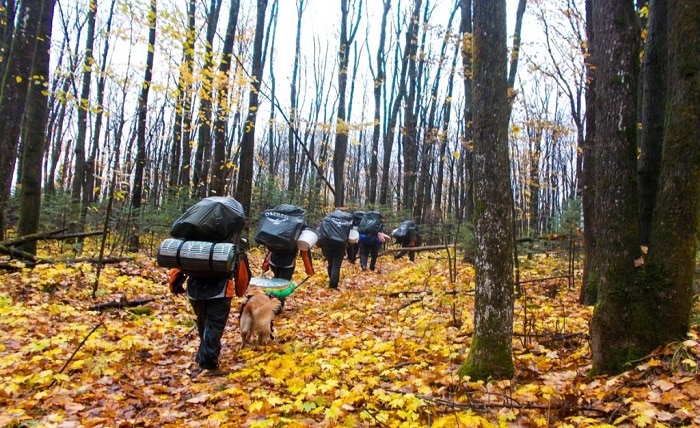Trails wilderness program death

The allure of the wild is undeniable. The call of the open trail, the thrill of pushing physical and mental limits, the deep connection with nature – these are experiences that draw millions to wilderness programs and outdoor adventures every year. Yet, beneath the exhilaration lies a sobering reality: tragedy can strike in the blink of an eye.
In recent years, a string of deaths in wilderness programs has cast a shadow over the outdoor adventure industry. From dehydration and hypothermia to drowning and falls, these incidents raise critical questions about safety protocols, risk management, and the very ethos of pushing participants beyond their perceived limits.
This blog post delves into the complexities of wilderness program deaths, exploring the contributing factors, examining safety concerns, and proposing steps towards mitigating risks. We will honor the lives lost by seeking to understand the why and the how, with the ultimate goal of making outdoor adventures safer for everyone.
A Haunting Reality: Wilderness Program Fatalities
Every year, countless individuals embark on wilderness programs, ranging from short day hikes to month-long expeditions. While the vast majority return with stories of wonder and accomplishment, some journeys end in tragedy.
A 2018 investigation by Outside Magazine documented at least 140 deaths in outdoor programs for youth between 2003 and 2017. These numbers represent not just statistics, but human lives cut short – young people with dreams and aspirations, families shattered by loss.
Each death is unique, with a complex web of contributing factors. However, some common themes emerge:
Inadequate supervision and risk assessment: In some cases, programs have been criticized for insufficient staff training, unrealistic expectations for participants, and failure to properly assess potential risks.
Environmental hazards: The wilderness is inherently unpredictable, with dangers ranging from extreme weather events to challenging terrain and wildlife encounters.
Medical emergencies: Underlying health conditions or sudden medical issues can be exacerbated in the wilderness, posing serious threats to participants.
Mental and emotional strain: The demanding nature of wilderness programs can take a toll on mental and emotional well-being, potentially leading to impaired judgment and risky behavior.
Beyond the Headlines: The Contributing Factors
Understanding the reasons behind wilderness program deaths requires looking beyond sensational headlines and delving into the intricate tapestry of contributing factors. Here are some key areas to consider:
Program Design and Leadership: The structure and philosophy of a program play a crucial role in safety. Programs based on competition, pushing participants to their limits, or operating in extreme environments carry inherently higher risks. Strong leadership, with qualified and experienced instructors who prioritize safety above all else, is essential.
Participant Selection and Preparation: Not everyone is suited for every wilderness program. Proper screening and assessment are crucial to ensure participants have the necessary physical and mental capacity to handle the challenges ahead. Thorough preparation through training, education, and realistic expectations of the program’s demands are vital.
Risk Management and Emergency Response: Every program should have a comprehensive risk management plan that identifies potential hazards, outlines mitigation strategies, and establishes clear emergency response protocols. Regular training and drills are essential to ensure everyone is prepared to act in case of an incident.
Communication and Transparency: Open communication between program leaders, participants, and families is critical. Clear rules and expectations should be established from the outset, and ongoing communication about risks, challenges, and any changes in itinerary or plans is essential.
A Spotlight on Regulation: Are Wilderness Programs Adequately Governed?
The regulation of wilderness programs varies widely across jurisdictions. Some countries have established minimum standards and certification requirements, while others have minimal oversight. This lack of uniformity can create a situation where programs operate with varying levels of safety protocols and risk management strategies.
Advocates for stricter regulations argue that minimum standards for staff qualifications, program design, risk assessment, and emergency response are essential to ensure the safety of participants. They also call for increased transparency and accountability from program providers, with mandatory reporting of incidents and near misses.
Conclusion:
The allure of the wild beckons, offering transformative experiences and profound connections with nature. Yet, navigating the wilderness demands both respect and caution. The tragic loss of life in wilderness programs necessitates a critical examination of safety protocols, risk management strategies, and the very ethos of pushing participants beyond their perceived limits.
FAQ
1. How can I choose a safe wilderness program?
Look for programs with qualified and experienced instructors, a strong risk management plan, and a focus on participant well-being. Ask about their safety record, staff training, emergency response protocols, and group size limits. Read reviews and talk to past participants to get a sense of the program’s culture and approach.
2. What should I do to prepare for a wilderness program?
Get a thorough physical checkup and disclose any existing medical conditions. Train for the physical demands of the program, practice outdoor skills, and familiarize yourself with the environment and potential hazards. Pack appropriate gear and clothing for the expected weather conditions.
3. What are some warning signs that a program may not be safe?
Be wary of programs that emphasize competition or pushing participants beyond their limits, lack transparent communication about risks and safety protocols, or have a history of incidents. Trust your gut feeling and don’t hesitate to raise concerns if something feels off.
4. What can I do if I have concerns about a wilderness program?
You can report your concerns to the program provider, the relevant regulatory body, or an outdoor safety organization. You can also share your experiences publicly to raise awareness and help others make informed decisions.
5. How can I honor the lives lost in wilderness programs?
We can honor the memory of those who have lost their lives by advocating for improved safety in wilderness programs, sharing their stories to raise awareness, and supporting organizations that work to prevent future tragedies.




